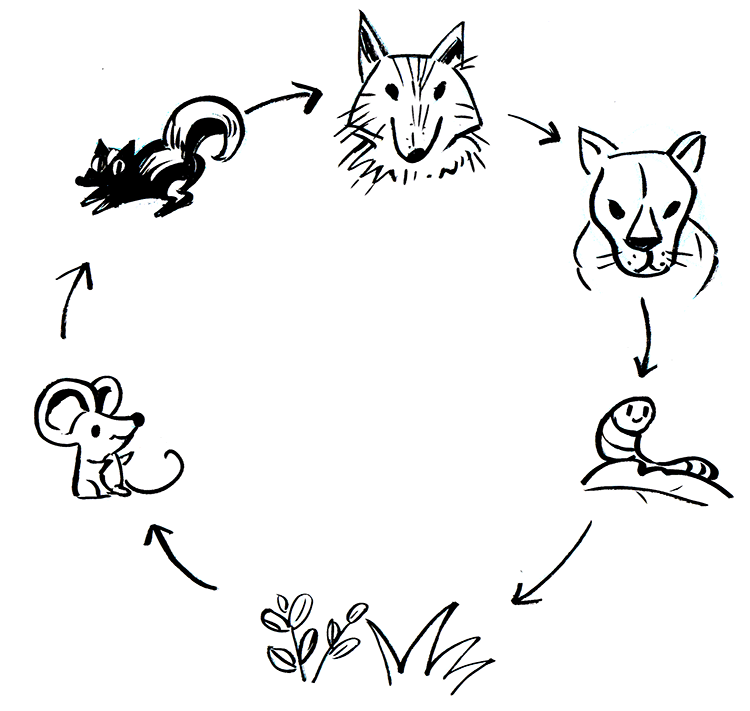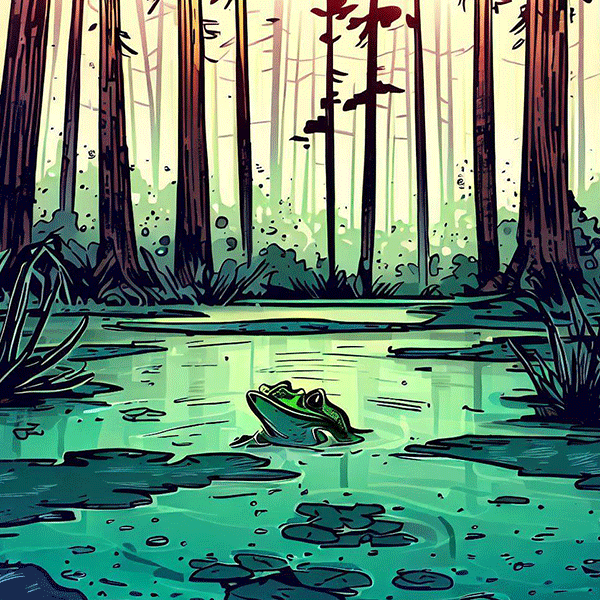The Intricate Web of Life
Picture your community – it’s probably full of different people doing different jobs, all working together to keep things running smoothly. Nature has its own version of this – it’s called an ecosystem.
What Exactly is an Ecosystem?
An ecosystem is a community of living organisms (like animals, plants, and microorganisms) and non-living components (like air, water, and soil) that interact with each other in a specific environment. Each organism has a role to play, and everything is interconnected. From the Amazon Rainforest to a tiny puddle in your backyard, ecosystems come in all shapes and sizes!
Key Parts of an Ecosystem:
- Producers: These are usually green plants that make their own food using sunlight through a process called photosynthesis.
- Consumers: These are animals that cannot make their own food. They eat other organisms to get energy. They can be herbivores (plant-eaters), carnivores (meat-eaters), or omnivores (both plant and meat-eaters).
- Decomposers: These are nature’s recyclers. They break down dead plants and animals into nutrients that enrich the soil and help new life grow.

The Magic Behind Ecosystems:
- Food Chains and Food Webs: These show how energy flows from one organism to another within an ecosystem. It starts with the sun giving energy to plants. Herbivores eat the plants, then carnivores eat the herbivores. Finally, decomposers break everything down when it dies.
- Habitats: Every ecosystem provides different habitats, which are homes for various species. For example, a coral reef provides shelter for thousands of sea species.
- Biodiversity: This refers to the variety of life in an ecosystem. The greater the biodiversity, the healthier the ecosystem. Each species, no matter how small, plays a part in maintaining balance.
Protecting Our Ecosystems:
Unfortunately, many ecosystems are under threat due to human activities such as pollution, climate change, and deforestation. But here’s how we can help:
- Reduce, Reuse, Recycle: By managing our waste better, we can reduce pollution that harms ecosystems.
- Plant More Greenery: Trees and plants provide food and shelter for wildlife, absorb carbon dioxide, and release oxygen.
- Educate Ourselves and Others: The more we understand about ecosystems, the better we can protect them.
Remember, every creature, from the smallest insect to the largest mammal, plays a vital role in maintaining our ecosystems. By taking care of our ecosystems, we’re ensuring a healthy and sustainable planet for future generations. So, during your next outdoor adventure, take a moment to appreciate the wonderful complexity and beauty of the ecosystem around you!
